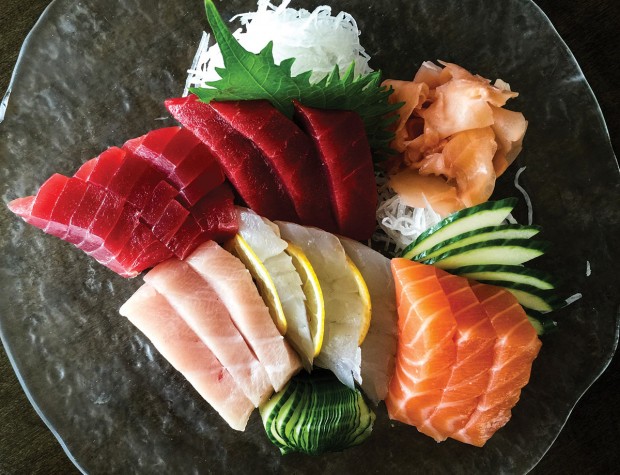Sushi by the season

As the seasons change, so does the choice of sushi in Japan. In the summer, abalone, horse mackerel and the simple taste of sea bass highlight menus. Come winter, diners look eagerly to savoring fat-rich chu-toro and o-toro. Here, in the U.S., diners are less swayed by outside temperatures when ordering sushi.
The star appeal of bluefin toro will prompt many to order it in the heart of July, even though it may not taste its best. Like fruits and vegetables, prime time varies from fish to fish, and to really get your money’s worth – because sushi is not cheap – maybe it’s time to start ordering sushi that’s in season like the Japanese.
It was chef Addison Lee of Kuu (947 Gessner) who turned me on to this idea, taking my dining experience a step further. Like most diners, I would order the holy trinity of sushi – every time: top-selling salmon, tuna and himachi. Now, salmon, especially when farmed in Scotland, is good year-round, said executive chef Horiuchi “Hori” Manabu of Kata Robata (3600 Kirby). Flavor and texture remain consistent.
“But bonito, uni, or sea urchin, bluefin and yellowfin tunas – the wild catches – are at their peak fall and winter. All fish get better really,” Manabu said. “When the water gets cold, the fish gets fatter to survive.”
Inspired by Japanese friends, I savored sushi and sashimi as they are, with the barest dab of wasabi and the subtlest splash of soy sauce. And for once, I didn’t order salmon and tuna. Instead, I ordered what was in season.
At Nippon (4464 Montrose), chef Naoki Yoshida suggested aji (horse mackerel) and shima aji – both popular in the summertime. I savored the freshness of both, side by side, and was blown away by the differences in texture. The aji was soft and tender while the firmer, meatier shima aji was between a mackerel and a yellowtail.
But it was executive chef Teddy Wang of Sage 400 (2800 Sage Road, A400) who taught me that tasting fish, especially in the same family, side by side, can be eye-opening. “Look at the difference in color,” he said, holding up trays of yellowfin and bluefin. “The yellowfin is a lighter red; the bluefin is dark, brilliant red.” Milder in flavor, yellowfin would appeal to non-fishy diners, while the bluefin exploded with robust brininess.
Fall and winter are just around the corner – the ideal time to splurge on sushi and explore an ocean of possibilities.
Sushi by the season
Fall: Bonito, sea urchin, himachi (yellowtail) and tuna (skipjack, bluefin, yellowfin), hake, soft shell crab, squid, mussels, striped bass, lobster
Winter: Most fish, particularly tuna, chu-toro (medium fat), o-toro (fattiest), sea bass, saba, sea urchin, mahi mahi, escolar
Spring: Triggerfish, snapper, oyster, flounder, soft shell crab, mussels, squid, sea bass, sea perch, mahi mahi, escolar, halibut, black grouper, Spanish mackerel
Summer: Wild salmon (king, sockeye and coho), aji, shima aji, mussels, lobster, grouper, trigger fish, eel, gizzard shad
Find out where the experts eat, with our Chef’s Corner column. This month, Dai Huynh interviewed chef Horiuchi Manabu of Kata Robata.
Want more buzz like this? Sign up for our Morning Buzz emails.
To leave a comment, please log in or create an account with The Buzz Magazines, Disqus, Facebook, or Twitter. Or you may post as a guest.



